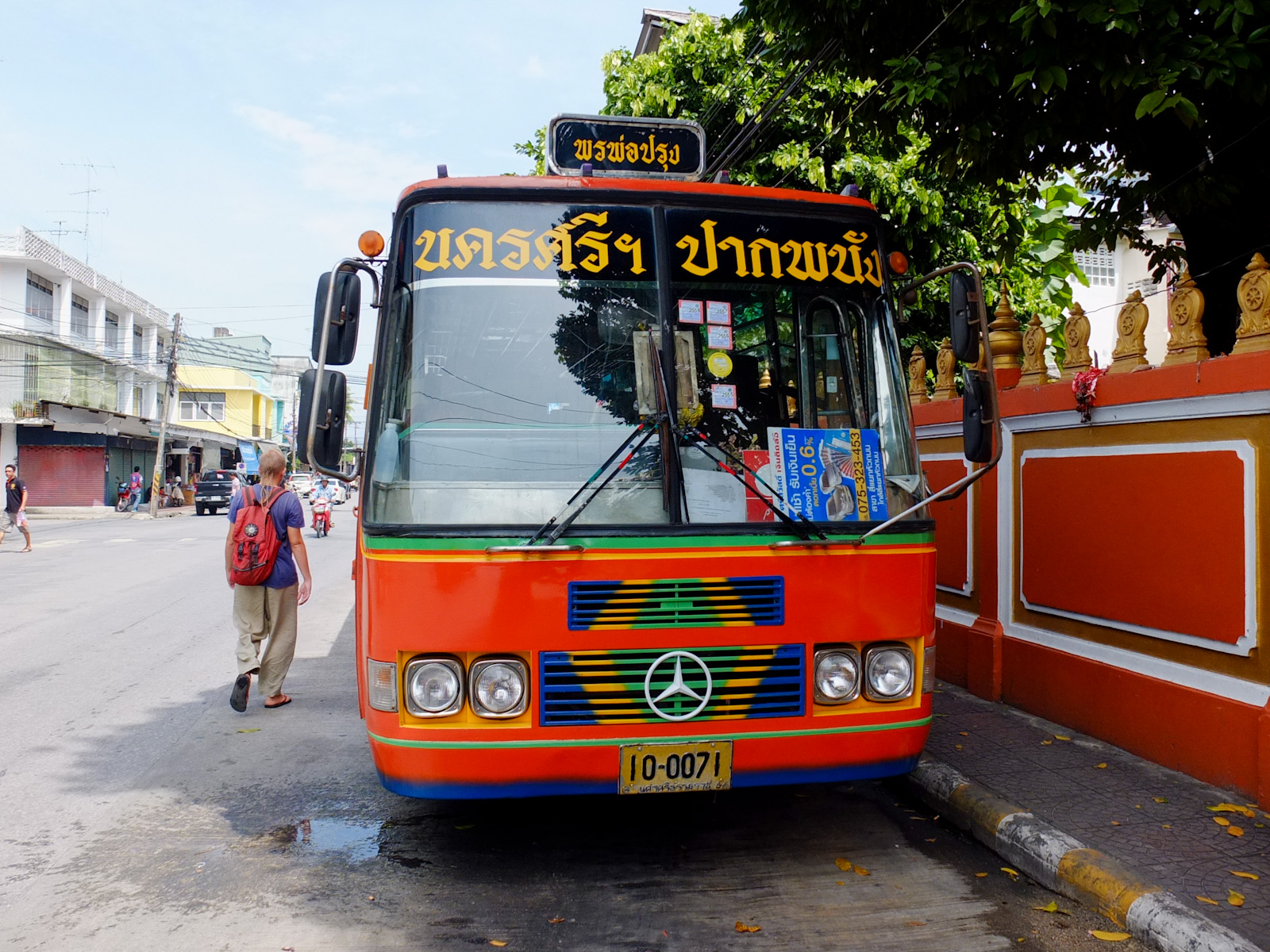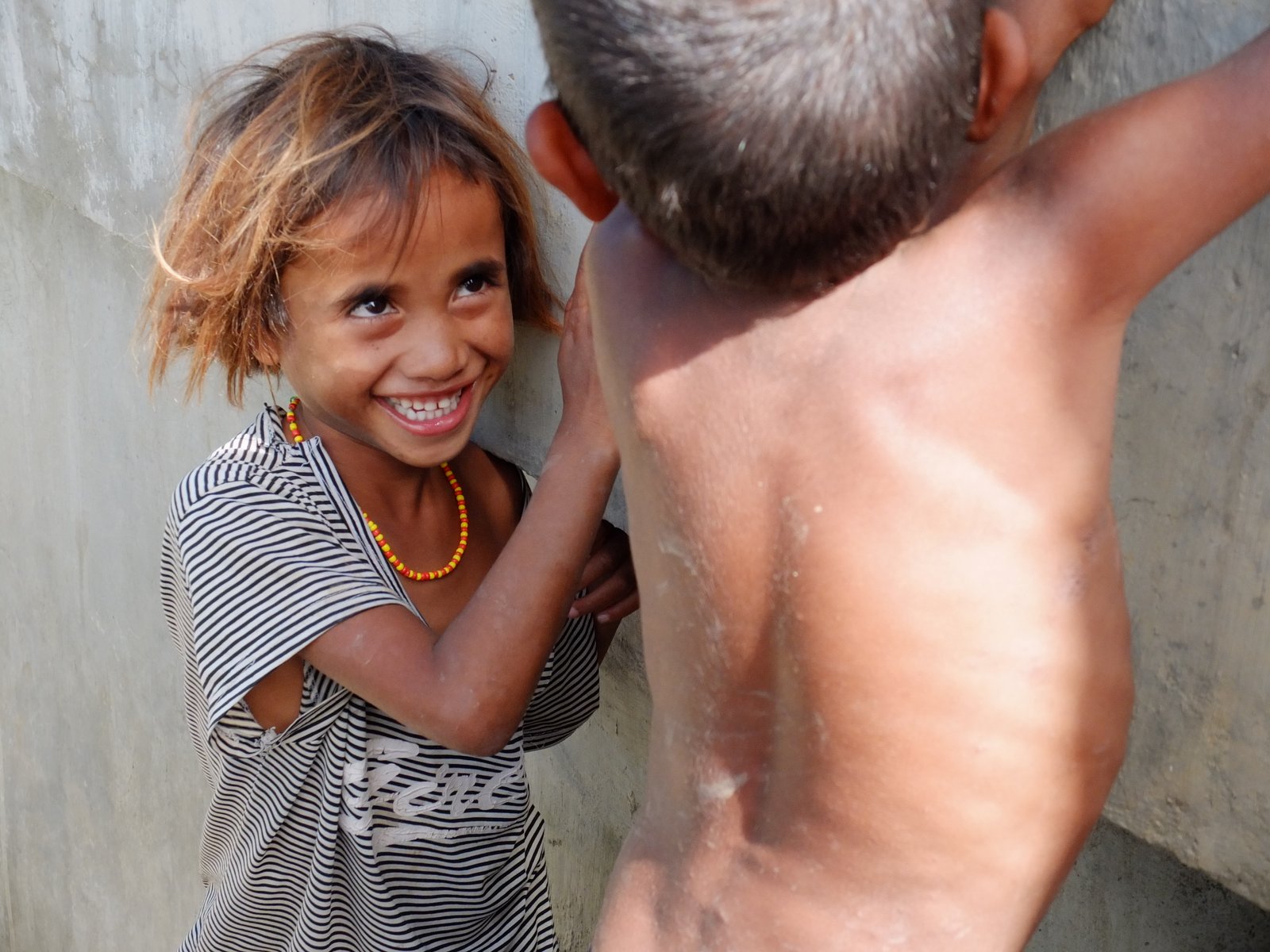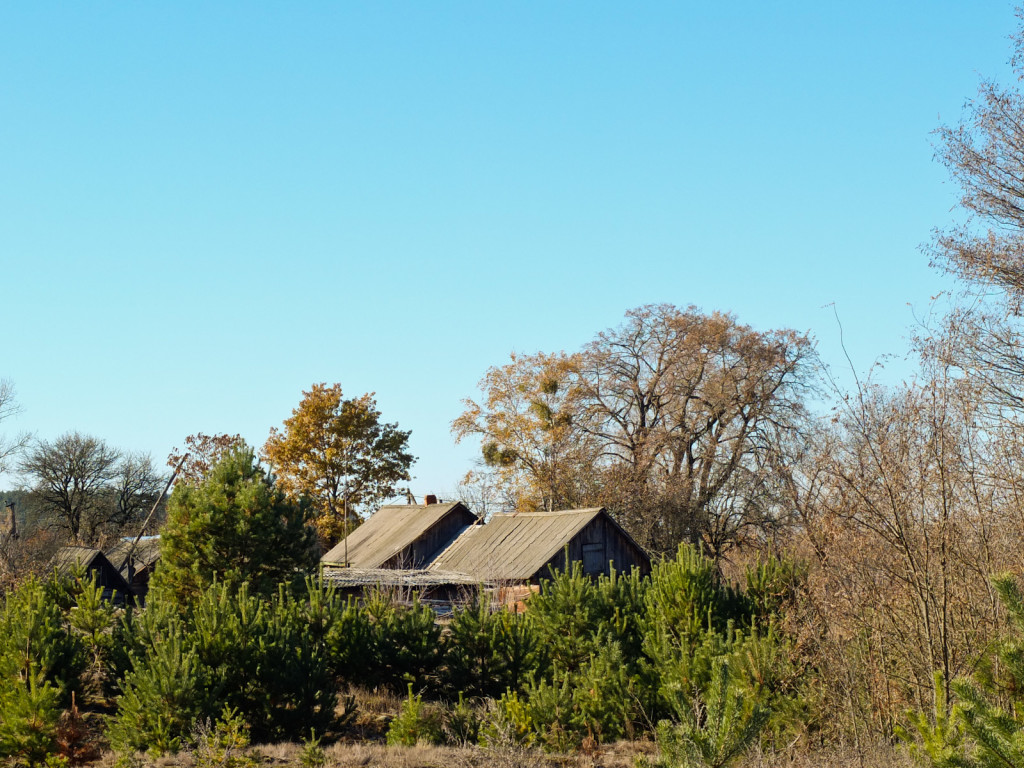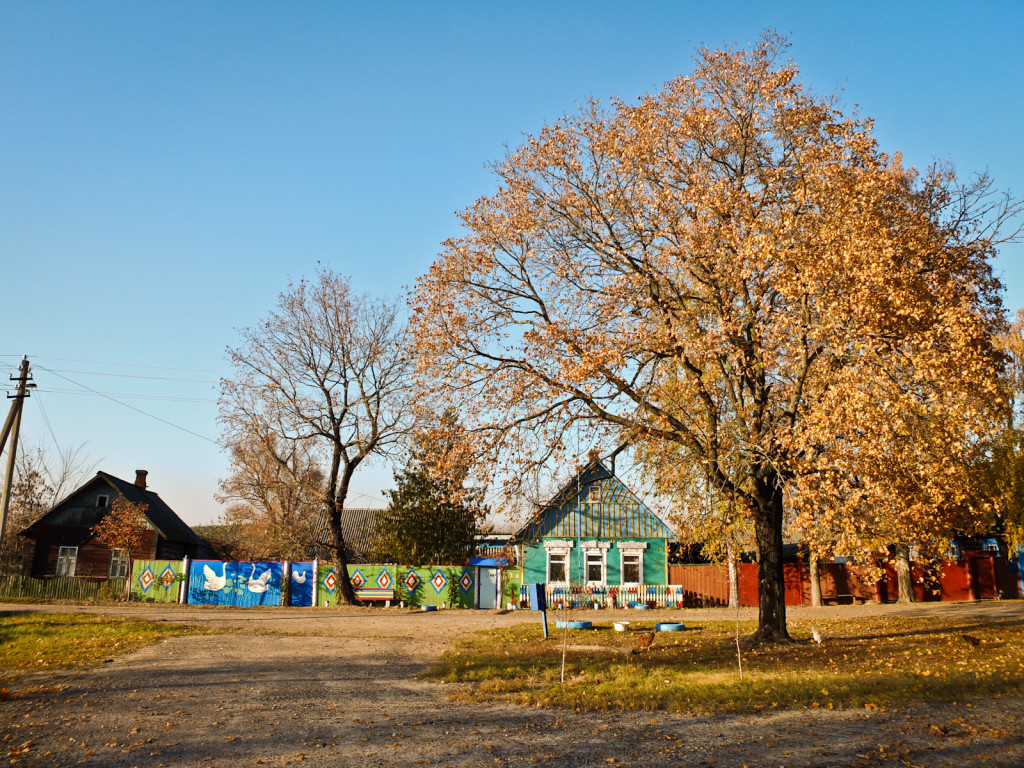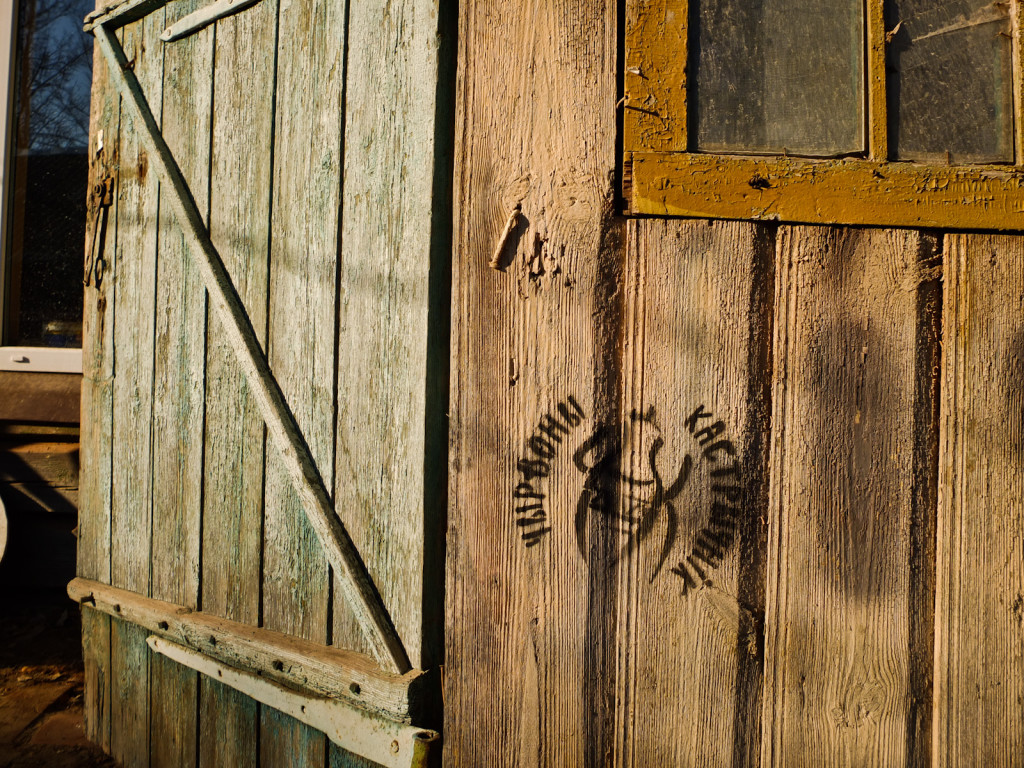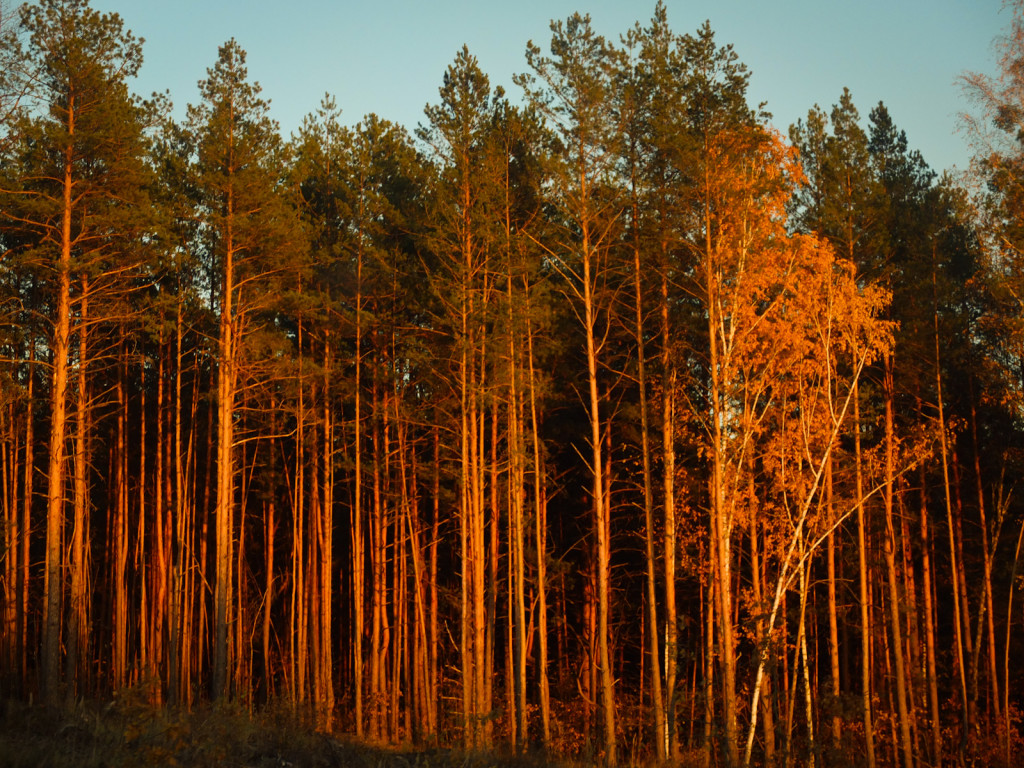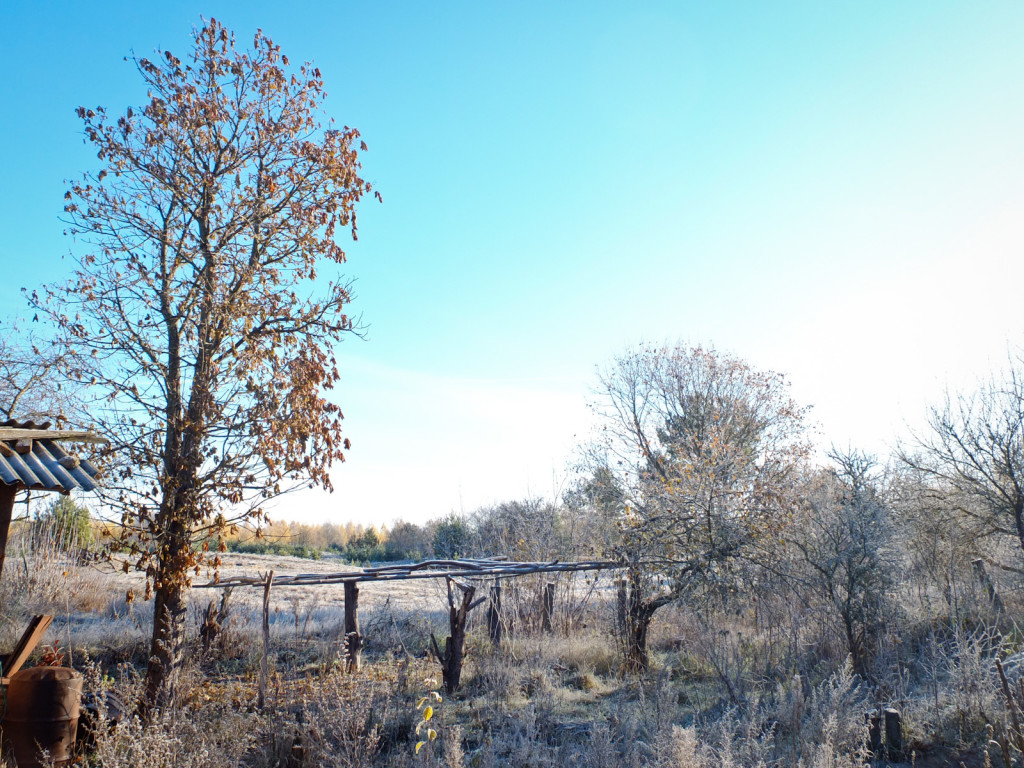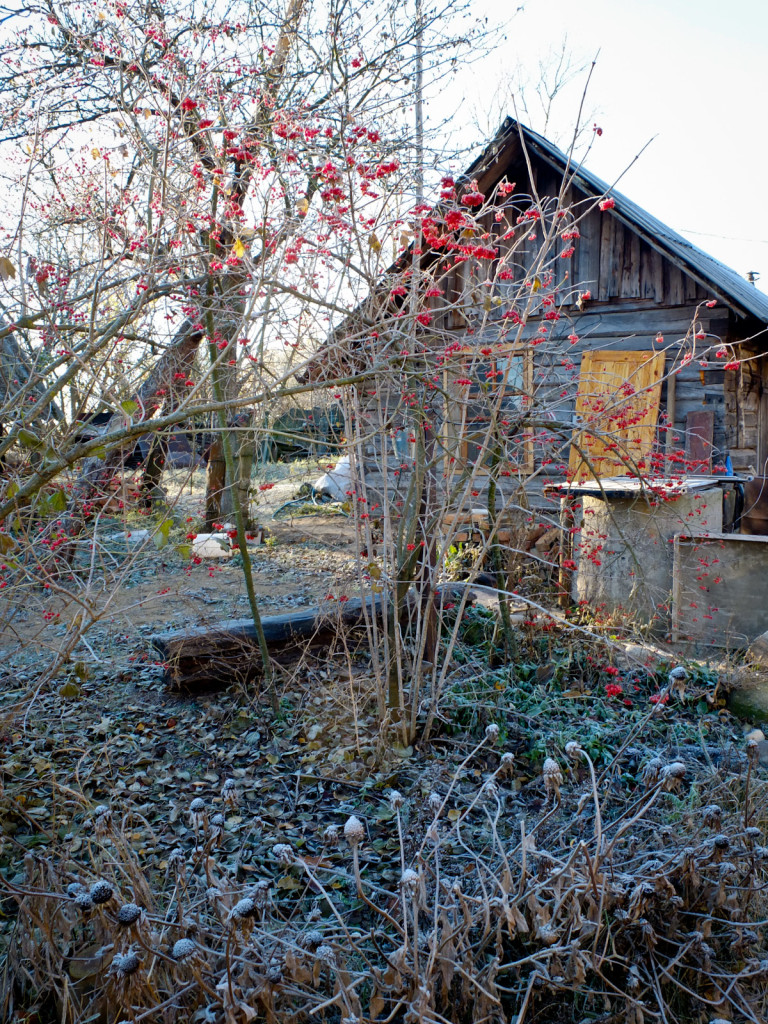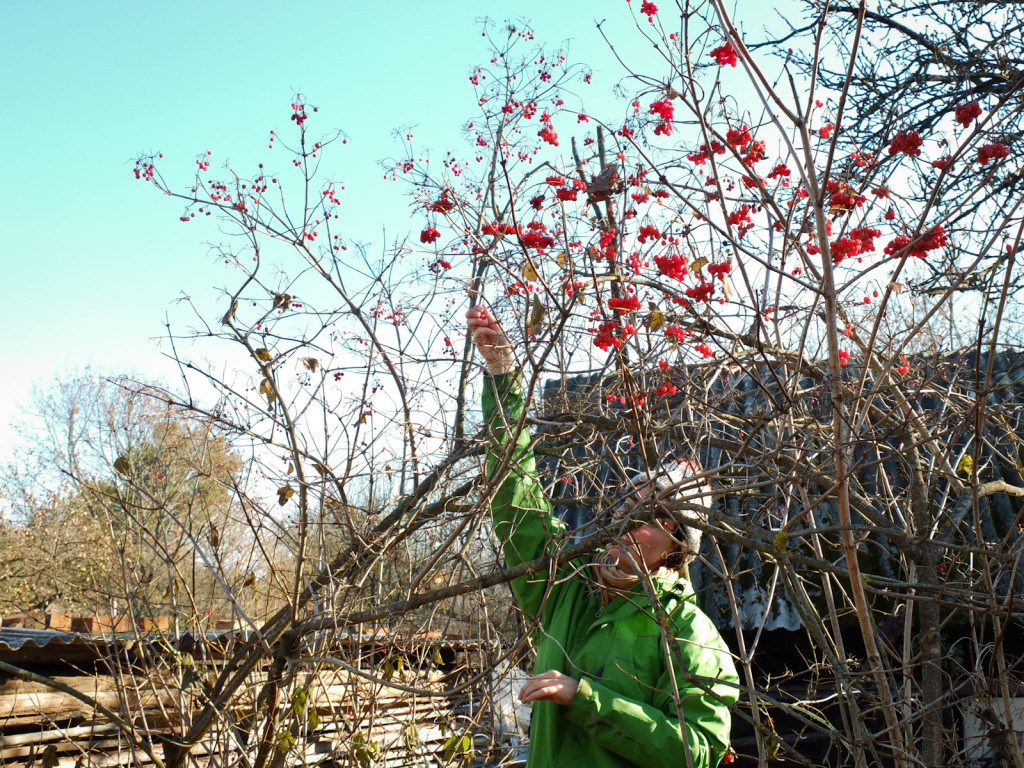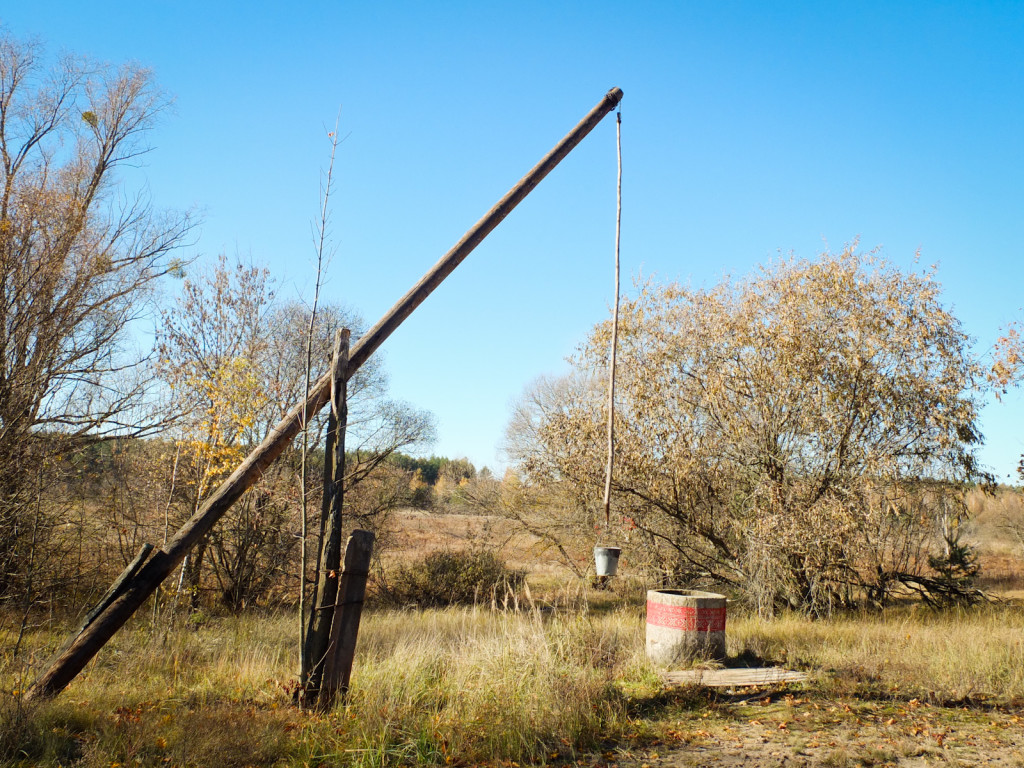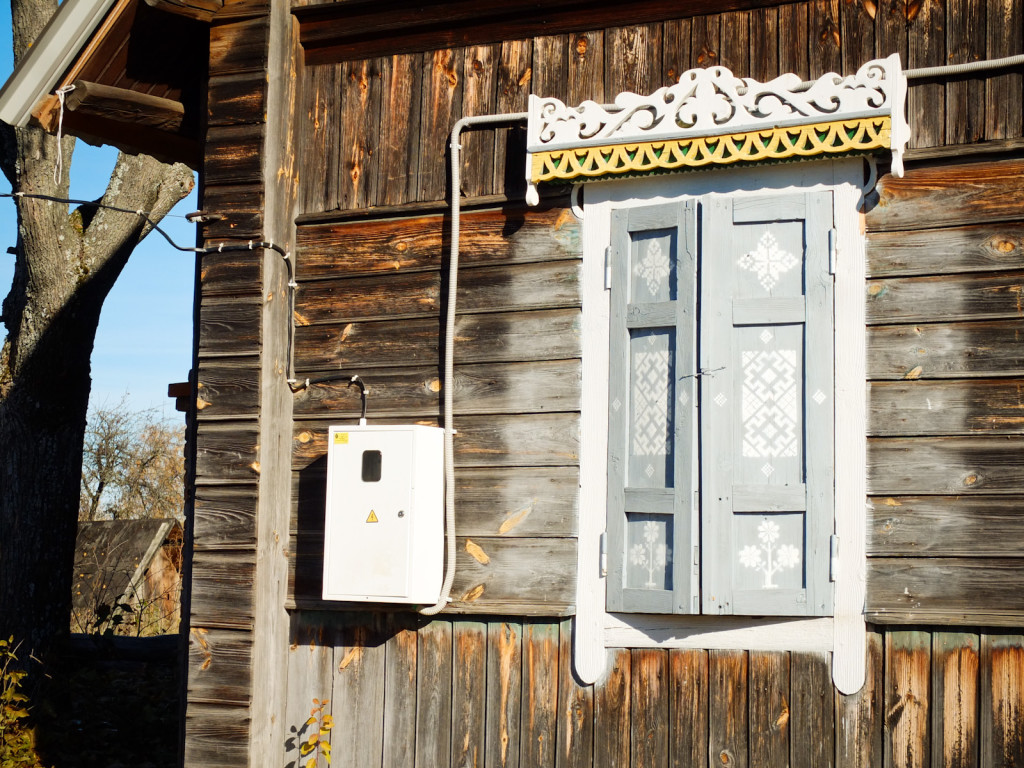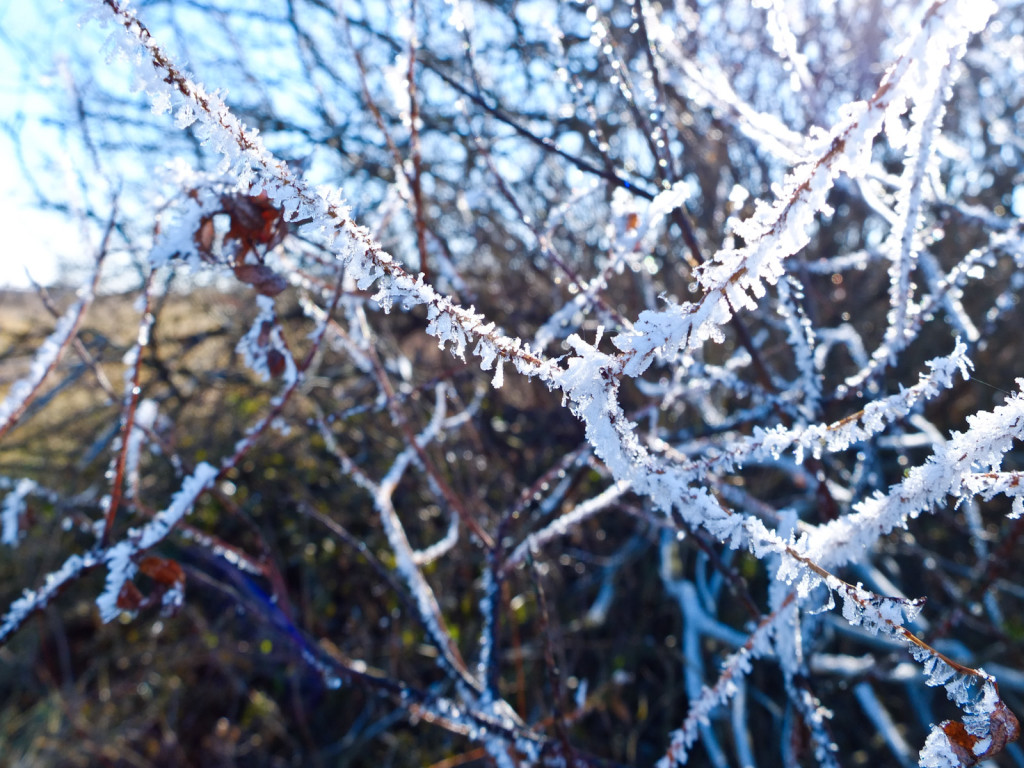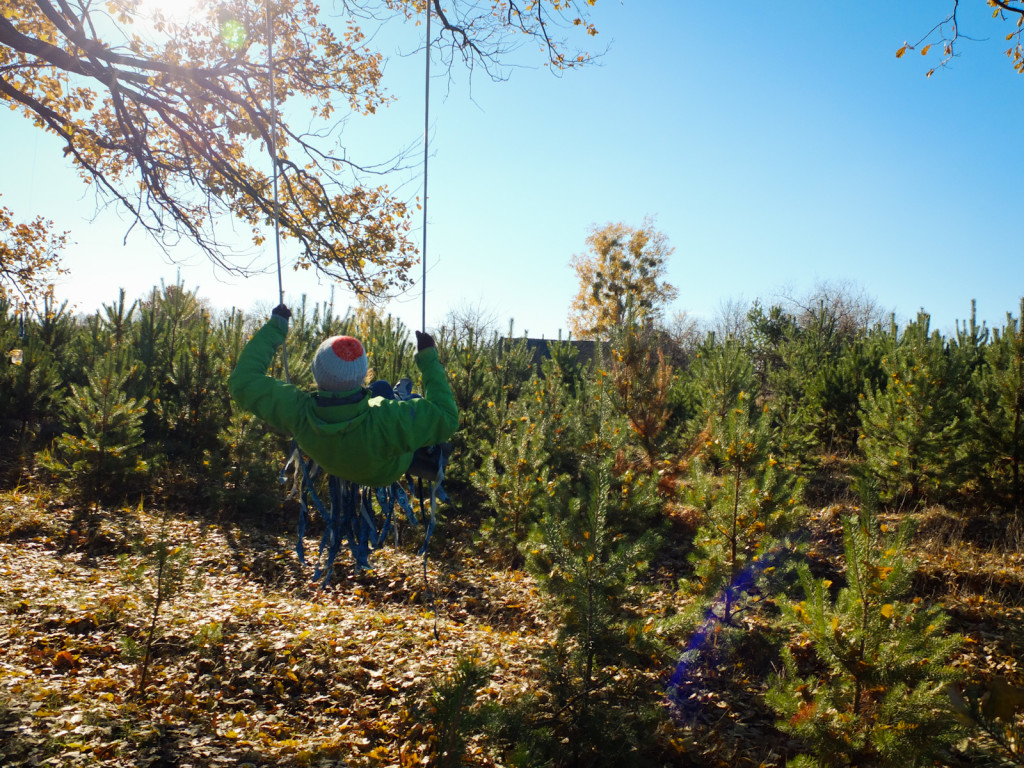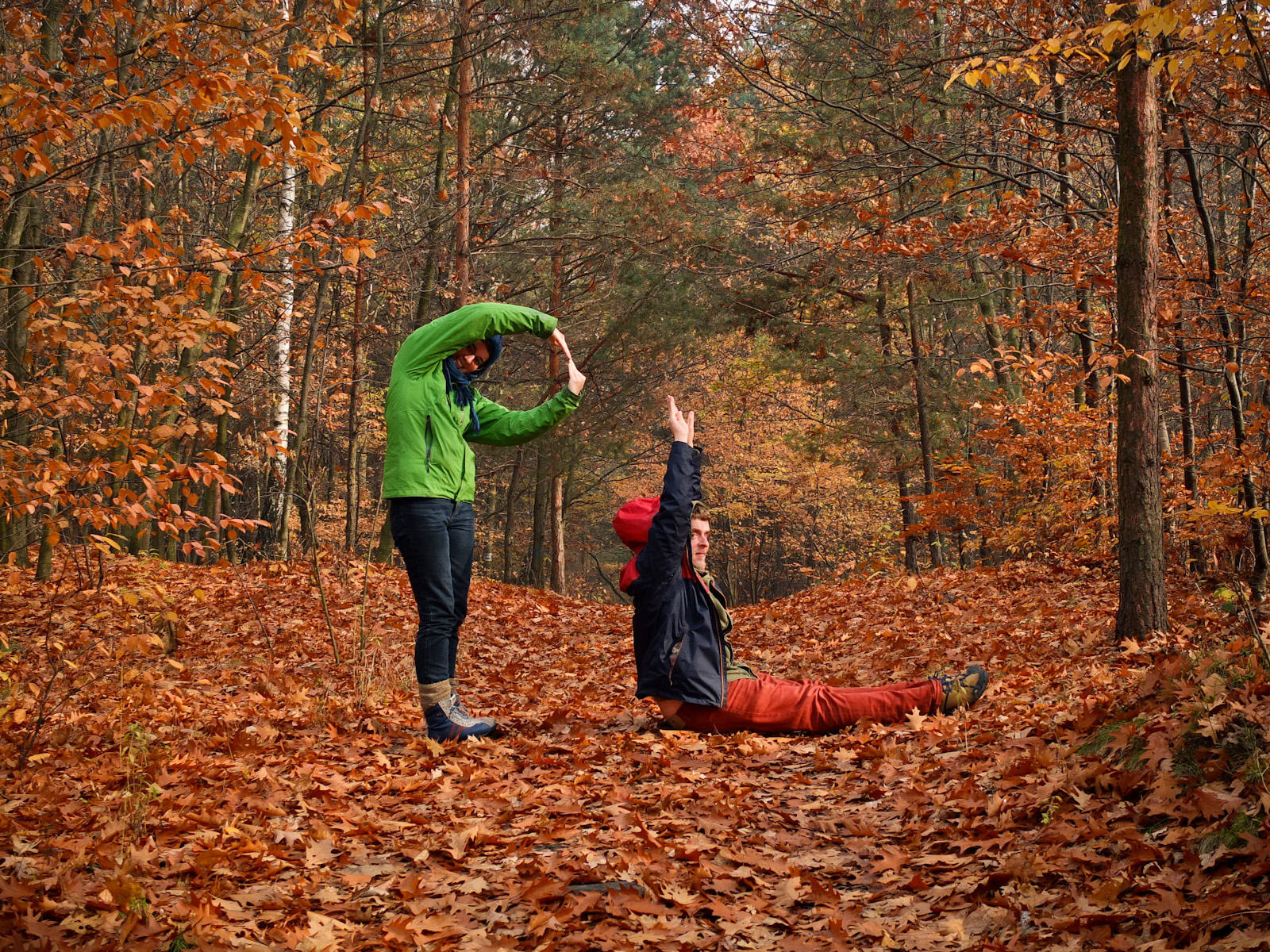
Red October
What was the name of this village before the revolution? “There was no village here before the revolution, it was a river here,” says Kirill (36), whose family are the only permanent dwellers of Чырвоны Кастрычник (Chyrvony Kastrychnik, Red October in Belarussian), “In the early years of the Soviet Union, they straightened up the Dnieper River for navigation. People from an overpopulated village nearby moved here then.” The whole region of Polesia, full of swamps and flooding rivers, has long been ignored by history. Local folks spoke their own language that had no name, they were calling it “our speech”. Even in the interwar period of 1918-1939, many dwellers of Polesia were not seeing themselves as belonging to any nation – asked who they were, they would answer “we’re from here.” They lived the same way for hundreds of years, growing and collecting food in the summer and in the winter making clothes and other commodities. “Every day of the year had its scheduled tasks, they always knew what to do,” says Kirill, “The oldest people remember it as a very happy time, with almost unlimited freedom.” Everything got changed in the time of the Soviet Union, that is after World War II in the west of Polesia and here – after the October Revolution, the Red October.
Kastrychnik is surrounded by endless forests, swamps and fields. A local bus, coming twice a day, crawls on mostly unpaved roads through one wooden village after another, one little forest after another, one empty field… Sometimes it detours off the gravel road to an even worse one and slowly makes it forward for 10 minutes with the growing anticipation popping like a soap bubble when there’s no-one getting off nor waiting on the only bus stop in the village at the end of the road. The bus doesn’t even stop, it just turns around and navigates back to the gravel road the same way it came. Not a single soul along the way. No anticipation left, nothing to focus your eyes on, just forests, fields, sometimes a house with no sign of life. There’s a feeling of complete wilderness here, vast, almost overwhelming emptiness where you meet a sole babushka once in a long while, sitting in front of her wooden house painted with swans and flowers and reminiscing the times when there were other babushkas in the village to talk to. Here, every time of the year is different yet each of them is equally beautiful. Now it’s well into autumn, the time of the first frosts has come. For the last few days the temperatures haven’t been rising above zero but the warm sunlight melts spikes of ice on the leaves and blades of grass. Everything turns into different shades of brown and grey, sometimes yellow. It’s stunning despite its gloominess. Winter will bring the time of hibernation. Spring will come and bring the miracle of life. The green and blue summer will fill this life with warmth, even heat, and enjoyment. Now, the nature is dying. It’s death at its best, the real beauty of it.
After a long hour and a half the bus arrives to its last stop, to a village where 30 people live. That’s in the summer, in the winter this number falls to 6. From here we have to walk for 40 minutes using a road, or rather track, that’s hardly passable by car when there’s any mud. “There’s another way we can use to get here.” says Kirill “15 kilometres to the East, over this swamp and the forest behind it, there’s the main road from Minsk to Gomel’. But that forest is flat, full of unmarked tracks with many crossings, no landmarks. You need to know it very well or you might get completely lost in it.”
After the revolution, all the peasants in the region were obliged to work in kolkhozes, Soviet collective farms. Instead of working for their own survival, they were forced to work for money that could buy them some “modern” utilities. But there wasn’t enough money and after long days of hard labour which sense they didn’t see, they had to find time to grow some food for themselves. The churches were destroyed or turned into various warehouses. Often the government was encouraging people to destroy the churches themselves, to show that they are modern and don’t believe in silly superstitions like religion. Lost and hopeless, stripped of their dignity and sense of life, with vodka as the only widely available commodity, people started drinking a lot. Gradually, from generation to generation, the locals forgot their language, replaced by Russian, just with a local accent. Having to do all this work for strangers that came and forcefully changed their whole world, they got disconnected from the nature. They lost their feeling of responsibility for their work.
Life in Kastrychnik was particularly hard as it had been built on a dried river bed, surrounded by swamps. “To this day there is no quality soil here, just sand. Everyone in Belarus has a garden, people here also had some – half a kilometer away,” Kirill shows us a row of trees planted in the swamp by the old dwellers of the village, pointing at a row of rotten planks running just above the ground “That was the bridge leading through the swamps, in the forest on the other shore you can find wells, they must have used them to water their gardens.” Evgeniy, a Workaway volunteer who helps Kirill and Iren run their homestead, adds “In the spring, the Dnieper floods this whole area and you need to use a boat to go anywhere.” Kirill says that local kids had great excuses not to go to school “They could say that the road had been flooded and they couldn’t row for 2 kilometres, or too much snow had fallen and they were unable to walk this far in it.” I wonder how did they feel when the place they had to go to was not the school but a doctor’s office.
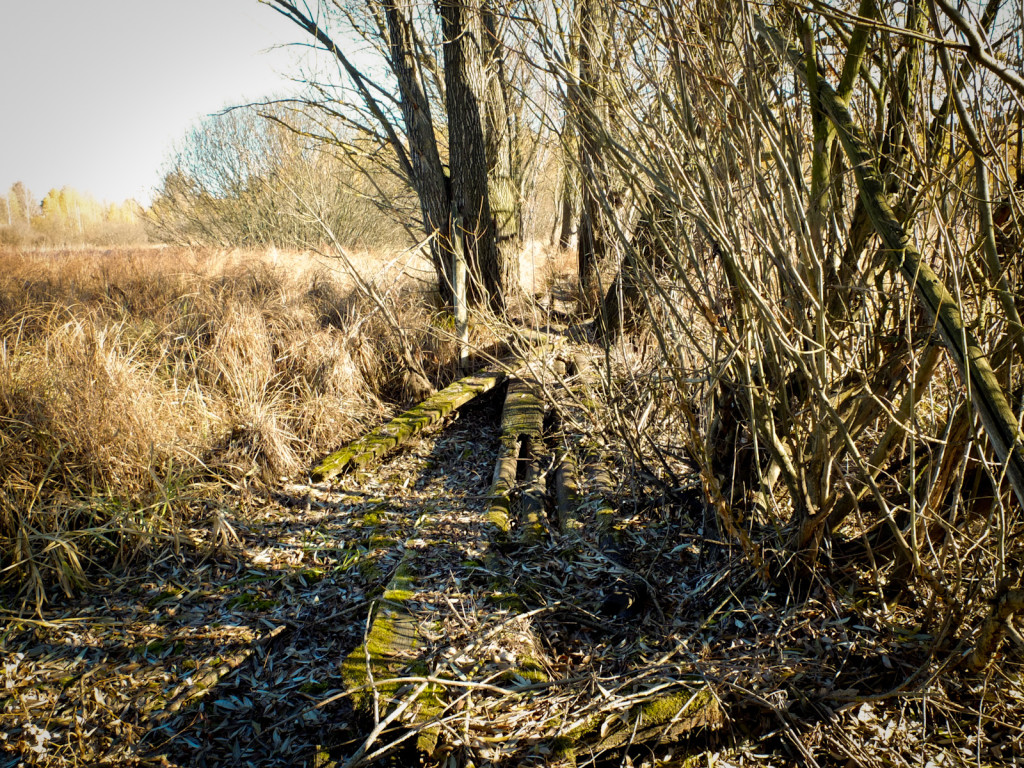
An old footbridge leading through the swamps, made by the village’s previous dwellers. They carefully planted the trees and shaped them so they could put planks in between the trunks.
Connected to the Global Village, the village of Kastrychnik stopped being a village. Most young people took the bumpy, muddy road and left. Only the oldest folks stayed. When they died, they were leaving their traditional wooden houses to rot. Kastrychnik became a hamlet with a handful of houses numbered between 2 and 20, but nobody here was ever using the numbers, given by the administration when the place was already half abandoned. In the late ’90s there was almost nobody left. Kirill bought a house here in 2009. “I was looking for a festival spot for a project I was part of. I came here and I understood I needed to look no more.” he says. “There was just one very old grandma left here. She was 82. They had already switched the electricity off.”
The festival Kirill was organizing was a warm-up before With a stool across the continents – an artistic project where separate expeditions were hitchhiking to 4 world’s oceans (in the Russian-speaking world, the Arctic Sea is considered an ocean), each of them travelling with a stool from their kitchen. Along with the stool they brought some of the local traditions from Russia, Ukraine and Belarus. The latter was represented by Kirill on the American part of the project – Kirill hitchhiked from New York to Cape Horn in Chile, organizing festivals and other culture exchange initiatives. Half the way through his journey, he got homesick. For Kastrychnik, where he never lived before. Now, he knew his destiny. “I bought it for $500. There’s a lot of houses in Belarus which you can buy for this price. But you can live in them only in the summer, when it’s warm and all you need is a sleeping bag, a mat and a roof over your head. Here we need to burn wood in the oven for 7-8 months a year to heat the place, it would be senseless to do it without changing the windows and fixing all the holes in the old, wooden walls. That takes a lot of work and money.”

Another house in Kastrychnik owned by Kirill. This one is unsuitable to hosting people in the winter yet.
Kirill moved in for good in 2011, followed a year later by Iren whom he met through a pottery master he went to study with. How did she end up here? “I got married,” she laughs, “I always dreamt of living in a remote village and I met a man who lived in one so I followed him.” Now they have a 1.5 year old son Yaronim. One of his first words was bolt and rather than his toys he prefers to experiment with serious stuff, like a drill. “I don’t know yet if I’ll send him to school or teach him at home. The village schools here are less efficient that the ones in the city and they don’t manage to process children as much. But it all depends on the teacher. Some teachers are really great, but some of them are so awful, they compensate their personal complexes using the children. They use this little power they have in the classroom to feel better.” Many people in the ex-Soviet Union mention similar cases. Maybe in the USSR people felt so powerless that they got used to utilizing power whenever they had a tiny bit of it?
“We don’t have many plans for the future, we’ll see what it brings. But what we have plans for is 50 years of building and renovation!” jokes Iren. “We’re finishing off the house we’re living in, building a banya and then we’ll start renovating our guest house. We have guests all the time and it’s not comfortable to share our one room with them.” All the houses here were built in the traditional way – one heated room for the family, another being a kitchen and dining room where bigger meals were cooked in a traditional Russian oven along with pig food. Then, there is a sieni, an unheated entryway where people could deal with all kinds of small works, a tool-shed, all of it connected with other small buildings where pigs, chickens and maybe a horse or a cow lived.
By the time Kirill moved in, there was no more dwellers in Kastrychnik. Last year the government demolished all the unoccupied houses. There’s just 6 of them left now, two of them belonging to Kirill and four others to people who use them as holiday cottages. The family earns their living by making pottery and kilns. They are always visited by friends, artists, they have people from Workaway, WWOOFing, HelpX, Couchsfuring. They don’t plan to develop the village more, they say it’s nice to have no neighbours. Won’t Yaronim feel lonely? “We’ll give birth to his future friends, don’t you worry!” says Iren. Kirill sums up: “We have a few twin villages who are engaged in interesting activities. For instance one in Ukraine organizes a yearly festival where you plant wheat in the spring and come back to collect it late in the summer using a sickle. Then you process the grain using traditional methods and bake bread with it. They call it Bread by own hands. When we’re finished with all the renovations, we’ll come back to organizing a yearly festival based on Burning Man principle. We’re always open to new ideas and initiatives. It’s them what will shape the second life of Chyrvony Kastrychnik.”
For more information, see:
Kirill’s blog (google translation)
Obyrok art-hamlet in Chernihiv region of Ukraine (google translation)
Zalesse owl village in Belovezhskaya Pushcha, the biggest ancient natural forest in Europe (google translation)
Sauletosios Naktis festival, held in Gatauchiai – another twin village of Kastrychnik (google translation)
[youtube http://www.youtube.com/watch?v=b1dBBTe5UT8] Video from Bread by own hands festival
[youtube http://www.youtube.com/watch?v=BIYOpKA-BAY] A video made by one of the With a stool across the continents expeditions
And here’s some more Kastrychnik photos from our private collection:

